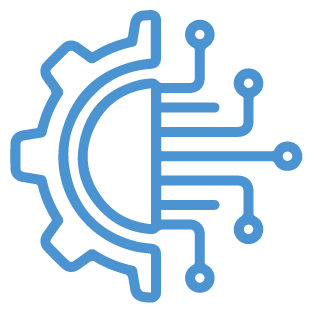
Software Services
Empowering Businesses with Tailored Software Solutions
At Salzer Technologies, our Software Services are designed to address the evolving needs of modern businesses. With a focus on innovation, scalability and efficiency, we deliver solutions that solve specific challenges, enhance operations and drive measurable outcomes. Whether it’s a custom-built application, a robust enterprise system or a cutting-edge mobile solution our expertise ensures that your software investments generate lasting value.
Our Comprehensive Software Services
Custom Software Development
Tailored Solutions for Unique Business Needs
We specialize in designing and building bespoke software solutions that align with your unique requirements.

Scalable Architecture
Create systems designed to grow alongside your business needs.

Domain Expertise
Build solutions tailored to industries like healthcare, pharmaceutical, finance, technology, automotive and more.

Technology Proficiency
Leverage the latest frameworks, tools and programming languages to deliver modern, high-performing software.

Cross-Platform Development
Ensure compatibility across multiple devices, including desktops, mobiles and tablets.
Enterprise Software Development
-
CRM Solutions
Build partner relationship management systems to enhance partner engagement and sales performance.
-
SCM Software
Streamline supply chain operations with tailored software solutions.
-
Data Integration
Seamlessly integrate new enterprise systems with your existing IT ecosystem.
-
Automation Tools
Introduce automation to eliminate manual processes and reduce operational costs.


Mobile Application Development
Innovative Apps for the Modern Mobile-First World
We design and develop mobile applications that are user-friendly, functional and aligned with your business goals.
-
Cross-Platform Solutions
Use frameworks like Flutter or React Native to develop apps that work across multiple platforms.
-
Enterprise Mobility Solutions
Build mobile apps for internal workflows, field operations, or partner interactions.
-
Engaging UI / UX
Ensure intuitive and visually appealing designs that enhance user engagement.
-
Secure and Scalable
Develop apps with built-in security features and scalability to handle growing demands.
Web Application Development
-
Custom Web Portals
Build platforms tailored to your specific business processes and objectives.
-
E-Commerce Solutions
Create secure and scalable online stores that enhance partner experience.
-
Progressive Web Applications (PWAs):
Develop web applications that offer the functionality and speed of a native app.
-
Cloud-Based Applications
Leverage cloud platforms like AWS, Azure and Google Cloud to ensure flexibility and performance.
-
Responsive Design
Build applications optimized for any device, ensuring consistent user experiences.

Legacy Modernization
Transforming Outdated Systems into Modern Assets
We help businesses modernize legacy systems to improve functionality, compatibility and efficiency.
-
System Analysis
Evaluate current systems to identify gaps and opportunities for improvement.
-
Technology Upgrades
Replace outdated frameworks and languages with modern, scalable technologies.
-
Data Migration
Ensure secure and seamless migration of critical data to upgraded systems.
-
Integration Capabilities
Connect legacy systems with new platforms for enhanced functionality.
-
Cost Optimization
Extend the lifecycle of older systems while reducing maintenance costs.

Maintenance and Support
Ensuring Long-Term Success and Reliability
Our comprehensive maintenance and support services keep your software running smoothly, securely and efficiently.
-
Proactive Monitoring
Detect and address issues before they impact operations.
-
Regular Updates
Implement patches, feature enhancements and security upgrades.
-
24 / 7 Support:
Access follow-the-sun assistance for troubleshooting and issue resolution.
-
Performance Optimization
Continuously improve speed, functionality and reliability.
-
End-of-Life Management
Seamlessly transition to new solutions when systems reach their end-of-life phase.


Why Choose Us
-
Partner-Centric Approach
We work closely with you to understand your challenges and craft solutions tailored to your needs.
-
Domain Expertise
With extensive experience across multiple industries, we deliver software solutions that address industry-specific requirements.
-
Innovative Solutions
By leveraging the latest technologies and trends, we create future-proof applications that drive competitive advantage.
-
Agile Methodologies
Our agile approach ensures faster delivery, iterative improvements and adaptability to changing business needs.
-
Cost-Effective Strategies
With our Transparent Onshore/Offshore Model (TOM), we provide high-quality services while optimizing costs.
-
Proven Track Record
Backed by over 250,000 man-hours of experience, we have successfully delivered solutions to over 250 partners worldwide.